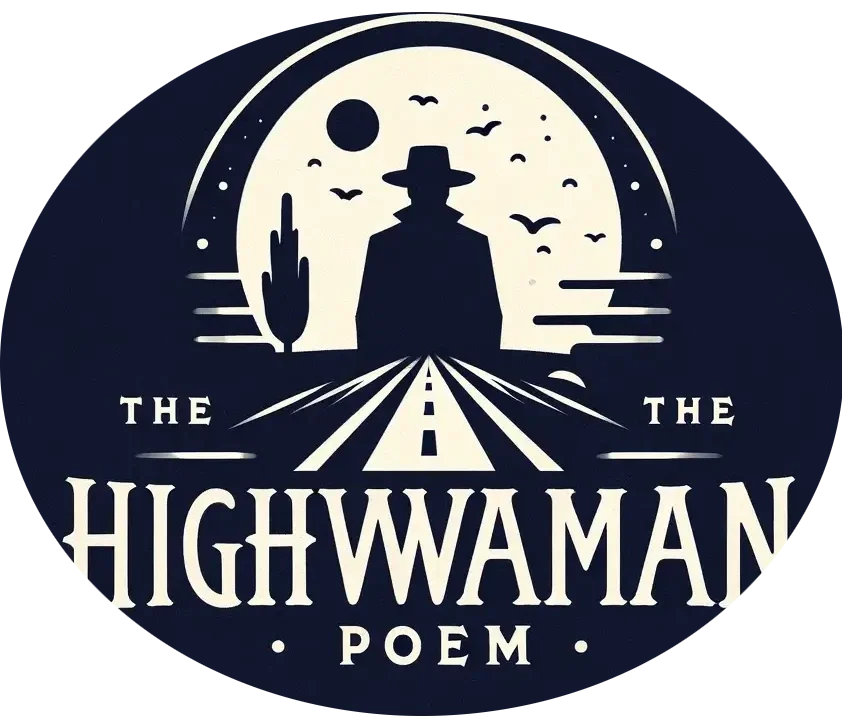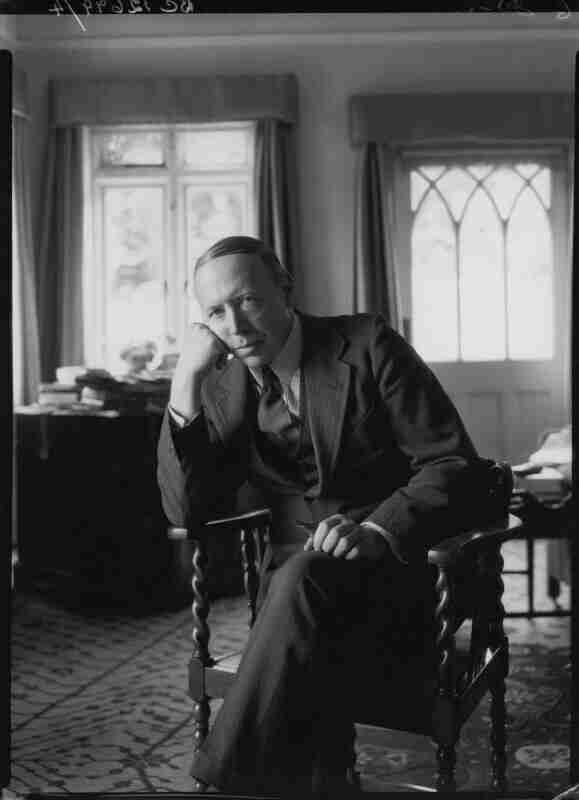Alfred Noyes is a renowned figure in the world of literature, and his works have left a lasting impact on readers like myself.
As I delve into his writings, I admire how he expertly weaves words together to create captivating stories and poems that have stood the test of time.
His writing style resonates with readers of all ages, efficiently transporting them to different worlds and eras.
Noyes’ contributions to literature are a treasure trove waiting to be discovered. From the timeless romance of “The Highwayman” to the haunting verses of “The Song of the Sword,” his words have a way of tugging at our heartstrings and sparking our imagination.
Exploring his works is like embarking on a literary journey filled with emotions, adventures, and thought-provoking themes.
Early Life and Inspiration
Growing up in England during the late 19th century, Alfred Noyes was surrounded by a rich literary tradition crucial in nurturing his love for words. Imagining young Alfred with books as his companions and stories as his playground, I explore his early years.
Education was pivotal in Noyes’s journey; he attended prestigious institutions like Exeter College and Oxford, where he honed his poetic skills. He developed his unique style during these formative years by blending traditional forms with modern themes. His education was like a canvas; he painted it with verses that would resonate with future generations.
Literary Career and Key Works
“The Highwayman” is considered a masterpiece in Noyes’ collection. This narrative poem tells a story of love, sacrifice, and tragedy set against the backdrop of highwaymen and clandestine romance. It’s a timeless tale that touches the heart.
Noyes’ gift for storytelling is evident as he creates vivid imagery and characters that come to life on the page. Every stanza of the poem is filled with tension, passion, and the ultimate sacrifice Bess makes to warn her lover.
Noyes’ ability to craft poetry that resonates with our deepest emotions is a testament to his skill.
“Drake” showcases a different aspect of Noyes’ talent. This epic poem takes us on a historical journey, celebrating the adventures of Sir Francis Drake. Noyes’ attention to detail and meticulous research is evident as he narrates Drake’s voyages and conquests.
It’s a vivid portrayal of an era of exploration and daring. What stands out is Noyes’ ability to take readers to a different time and make history come alive through his verses.
The themes in Noyes’ poetry vary, but a common motif is the triumph of the human spirit in the face of adversity. Whether it’s the highwayman facing danger or Drake navigating uncharted waters, Noyes’ characters exemplify courage and resilience.
His style is characterized by a rhythmic and lyrical quality, making his poetry a joy to read aloud.
What is Alfred Noyes known for?
Alfred Noyes is most famously remembered for his narrative poem “The Highwayman.” The poem was first published in 1906 and narrates the dramatic and romantic story of a highwayman in love with the landlord’s daughter who tragically meets his end.
“The Highwayman” is widely recognized for its vivid imagery, compelling storytelling, and evocative language. It has remained a celebrated and enduring work in English literature and is often studied in schools and anthologies.
Noyes’ masterful use of narrative and poetic techniques in this work has cemented his reputation as a notable poet and storyteller.
Noyes’ Unique Contributions to Literature
Alfred Noyes, a prominent poet of the Romantic era, distinguished himself from his contemporaries through his unique approach to poetry. While his peers focused on the grandeur of nature, Noyes brought human experiences to the forefront of his narratives.
His works, such as “The Highwayman” and “Drake,” explored themes of love, sacrifice, and the indomitable spirit of humanity, delving into the darker aspects of life without shying away from tragedy and loss.
What set Noyes apart, however, was his ability to infuse rhythm and melody into his verses. His poems were almost musical, with a cadence that drew readers in and made them feel the ebb and flow of emotions, much like a well-composed symphony.
This musicality added a layer of enchantment to his narratives, making them unforgettable.
Comparing Noyes to his contemporaries, it is apparent that his approach was refreshingly different. He grounded his poetry in tangible human experiences, making his works relatable and emotionally charged.
The poet’s incorporation of rhythm and melody into his verses distinguished him as a unique voice in the Romantic era.
When did Alfred Noyes write The Highwayman?
Alfred Noyes wrote “The Highwayman” in 1906. It was first published in his “The Highwayman and Other Poems” collection in 1907. This narrative poem has since become one of his most famous and enduring works, celebrated for its romantic and dramatic storytelling.
Noyes’ Unique Contributions to Literature
Charles Noyes was a master at blending the romantic and narrative elements in his poetry, and his works “The Highwayman” and “Drake” exemplify this skill.
Unlike other Romantic poets who focused on nature and the sublime, Noyes placed human experiences at the forefront of his work, creating relatable and accessible poetry that captured readers’ attention with compelling narratives.
Noyes’ poetry was distinguished from his peers by its musical quality. His verses were known for their rhythmic and melodic flow that gave the impression of being intended to be sung. This musicality contributed to the charm of his work, rendering it more captivating.
Noyes’ poetic approach was distinct from his contemporaries in the Romantic movement, as he based his work on lived experiences.
His poetry explored themes of love, sacrifice, loss, and heroism, often depicting both positive and negative aspects of life.
This approach made his work more accessible and relatable to readers, setting him apart from poets who focused solely on abstract concepts.
What events led up to Alfred Noyes not graduating?
Alfred Noyes attended Exeter College, Oxford, but he did not graduate. The specific events or reasons that led to his decision to leave Oxford without completing his degree are not well-documented.
His passion for literature and writing outweighed his commitment to formal education, prompting him to pursue a literary career without obtaining a degree.
In the following years, Noyes’s early departure from Oxford did not deter him from becoming a successful and influential poet and writer.
Teaching and Influence
Noyes had the privilege of teaching at Princeton University, where he imparted his knowledge and passion for literature to eager young minds.
His classes were known for their dynamic discussions and how he encouraged students to dive deep into the world of poetry. He had a genuine love for teaching and a dedication to nurturing the next generation of writers.
One of the most significant aspects of Noyes’ influence is his impact on his students. Many became accomplished writers, inspired by their time learning from him.
His guidance and mentorship played a crucial role in shaping their literary careers, and his teachings resonated in their work.
But Noyes’ influence didn’t stop with his students. His unique style and approach to poetry left a mark on contemporary writers of his time. His ability to blend narrative and romance, his musicality, and his willingness to explore the human experience influenced other poets and storytellers.
They saw in Noyes a trailblazer who dared to chart his own course in literature.
Why did Alfred Noyes write poems?
Alfred Noyes wrote poems because he had a deep passion for literature and poetry. He was inspired by the beauty of language and the power of storytelling through verse.
Writing poems allowed him to express his thoughts, emotions, and creativity; he found it a fulfilling and meaningful form of artistic expression.
Noyes also believed in the importance of poetry as a means of connecting with readers on an emotional and intellectual level, and he wanted to contribute to the world of literature with his own unique voice and perspective.
His dedication to poetry resulted in a body of work that continues to be appreciated and celebrated.
Later Years and Legacy
As Noyes entered the later stages of his life, he turned his attention to writing for children. This was a significant departure from his earlier works, often characterized by their romantic and narrative themes.
In this new phase, he ventured into the world of children’s stories and poems, demonstrating his versatility as a writer.
One of his most notable contributions to children’s literature is the poem “The Highwayman.” While it had originally been written for adults, its captivating storytelling and vivid imagery found a special place in the hearts of young readers.
This ability to create works that appeal to adults and children showcases Noyes’ exceptional storytelling prowess.
Noyes’ legacy in modern literature is undeniable. His shift towards children’s literature expanded his reach and influence. His works continue to be cherished by readers of all ages, and “The Highwayman” remains a timeless classic.
His impact on the literary world is a testament to his enduring creativity and ability to connect with diverse audiences.


